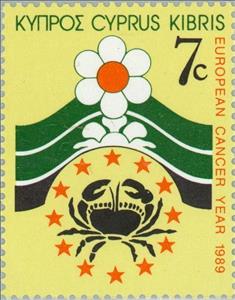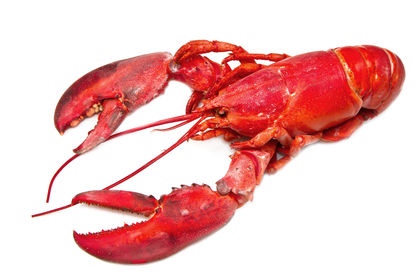Stamp: European Cancer Year (Cyprus 1989)
European Cancer Year (Cyprus 1989)
01 January (Cyprus ) within release Definitive Issues - Cyprus 1980-1999 goes into circulation Stamp European Cancer Year face value 7 Cypriot cent
| Stamp European Cancer Year in catalogues | |
|---|---|
| Michel: | Mi:CY 728 |
Stamp is vertical format.
Also in the issue Definitive Issues - Cyprus 1980-1999:
- Stamp - Bicentennial French Revolution - French Flag and face face value 18;
- Stamp - 100 Years of Interparliamentary Union face value 15;
- Stamp - Earthquake in Armenia face value 3;
- Stamp - European Cancer Year face value 7;
- Stamp - World Food Day face value 17;
- Stamp - Paphos Mosaics - Personification of Winter, 3rd cent. A.D. face value 1;
|
Data entry completed
83%
|
|
|---|---|
| Stamp European Cancer Year in digits | |
| Country: | Cyprus |
| Date: | 1989-01-01 |
| Size: | 27 x 37 |
| Perforation: | 13¼ x 13½ |
| Format: | Stamp |
| Face Value: | 7 Cypriot cent |
| Print run: | 180000 |
Stamp European Cancer Year it reflects the thematic directions:
Special Occasions
A flower, sometimes known as a bloom or blossom, is the reproductive structure found in plants that are floral (plants of the division Magnoliophyta, also called angiosperms). The biological function of a flower is to effect reproduction, usually by providing a mechanism for the union of sperm with eggs. Flowers may facilitate outcrossing (fusion of sperm and eggs from different individuals in a population) or allow selfing (fusion of sperm and egg from the same flower). Some flowers produce diaspores without fertilization (parthenocarpy). Flowers contain sporangia and are the site where gametophytes develop. Many flowers have evolved to be attractive to animals, so as to cause them to be vectors for the transfer of pollen. After fertilization, the ovary of the flower develops into fruit containing seeds. In addition to facilitating the reproduction of flowering plants, flowers have long been admired and used by humans to beautify their environment, and also as objects of romance, ritual, religion, medicine and as a source of food.
Crustaceans are a group of arthropods that are a part of the subphylum Crustacea (/krəˈsteɪʃə/), a large, diverse group of mainly aquatic arthropods including decapods (shrimps, prawns, crabs, lobsters and crayfish), seed shrimp, branchiopods, fish lice, krill, remipedes, isopods, barnacles, copepods, opossum shrimps, amphipods and mantis shrimp. The crustacean group can be treated as a subphylum under the clade Mandibulata. It is now well accepted that the hexapods (insects and entognathans) emerged deep in the Crustacean group, with the completed group referred to as Pancrustacea. The three classes Cephalocarida, Branchiopoda and Remipedia are more closely related to the hexapods than they are to any of the other crustaceans (oligostracans and multicrustaceans)
Animals are multicellular, eukaryotic organisms of the kingdom Animalia (also called Metazoa). All animals are motile, meaning they can move spontaneously and independently, at some point in their lives. Their body plan eventually becomes fixed as they develop, although some undergo a process of metamorphosis later on in their lives. All animals are heterotrophs: they must ingest other organisms or their products for sustenance.
Cancer is a group of diseases involving abnormal cell growth with the potential to invade or spread to other parts of the body. These contrast with benign tumors, which do not spread. Possible signs and symptoms include a lump, abnormal bleeding, prolonged cough, unexplained weight loss, and a change in bowel movements. While these symptoms may indicate cancer, they can also have other causes. Over 100 types of cancers affect humans





